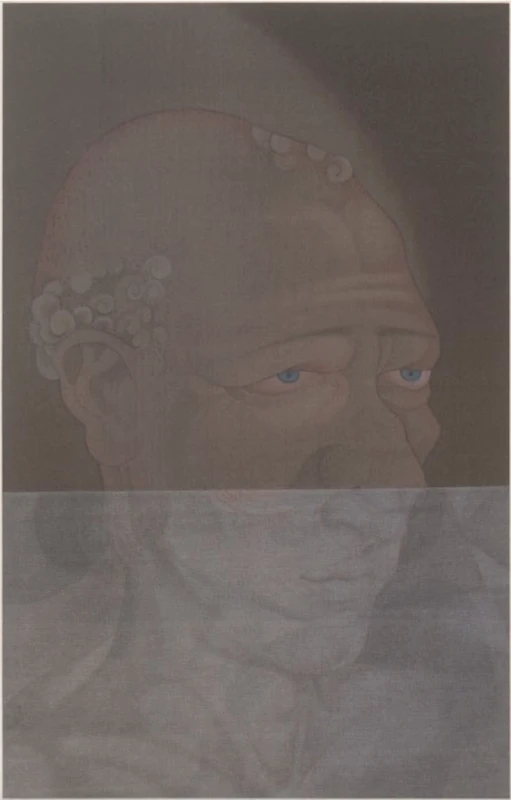Hao Liang


b. 1983, China
用中文閱讀
I am always playing on and playing up the strengths of traditional Chinese painting in my work. But I am also looking at film, literature, and philosophy, and using this foundation to break some of the limits of ancient painting.
—Hao Liang
In his intricately painted silk landscapes and portraits, Hao Liang filters the techniques, themes, motifs, and conventions of traditional Chinese guohua ink wash painting through a contemporary, cosmopolitan sensibility. He weaves together such outwardly divergent influences as classical poetry, modern literature, film theory, and modern art. Much of Hao’s work is concerned with perspectives on temporality, a theme that has historically been approached quite differently by Chinese and Western artists; where traditional Chinese artists tend to represent time as mutable and ambiguous, Hao aims to locate its unique complexity in the present moment. Crucially, he positions image making as not only an exercise in technical skill and art historical knowledge, but also a reflection of lived experience.
Hao was born in Chengdu, China, and lives and works in Beijing. His first exposure to art came at an early age through his godmother’s father, a noted collector of Chinese art who studied under Zhang Daqian, perhaps the most prominent Chinese artist of the twentieth century. (Zhang, a master of guohua painting, died in 1983—the year of Hao’s birth.) Hao enrolled at the Sichuan Fine Arts Institute, Chongqing, in 2002, majoring in Chinese painting, and graduated with a master’s degree from there in 2009. He considered becoming a teacher, but at the encouragement of fellow artist Xu Lei, decided to pursue painting.
In 2016, Hao showed a suite of paintings titled Eight Views of Xiaoxiang (2014–16) in a solo exhibition at the Ullens Center for Contemporary Art, Beijing. This set of large-scale works is his interpretation of a traditional subject for East Asian artists. In Hao’s version, each image appears distinct from its conventional depiction, offering a consciously multifaceted treatment of the well-known landscape. In 2017, Eight Views of Xiaoxiang was featured in the central exhibition of the 57th Biennale di Venezia, Viva Arte Viva—where he was one of the youngest participants. In the same year, his work was included in the group exhibitions Streams and Mountains without End: Landscape Traditions of China at the Metropolitan Museum of Art, New York, and Musée en oeuvre(s) at the Centre Pompidou, Paris.
Hao’s first solo exhibition in the United States was Portraits and Wonders at Gagosian, New York, in 2018. The exhibition’s centerpiece was Streams and Mountains without End (2017), a panoramic 37-foot-long silk scroll distinguished by a mix of figurative and abstract imagery—a gradual shift from the former style to the latter indicating his increasing focus on symbols and metaphorical elements. Transforming mountains and trees into geometric shapes, Hao combines references to the landscapes of Ming dynasty artist and scholar Dong Qichang, the Cubist compositions of Pablo Picasso, and the abstractions of Vasily Kandinsky.
In 2019, Hao integrated paintings, rubbings, documents, collotype prints, and antique jade into Circular Pond, an installation at the Aurora Museum, Shanghai, and in 2020, he exhibited new works in Garden of Six Seasons, Para Site, Hong Kong. In 2021, his work was included in The Dream of the Museum, the inaugural exhibition at M+, Hong Kong, and in the 10th Asia Pacific Triennial of Contemporary Art (APT10), Queensland Art Gallery and Gallery of Modern Art, Brisbane, Australia.
Hao’s work is featured in institutional collections worldwide, including the Metropolitan Museum of Art, New York; Kadist Art Foundation, San Francisco and Paris; Centre Pompidou, Paris; Bonnefantenmuseum, Maastricht, Netherlands; Queensland Art Gallery and Gallery of Modern Art, Brisbane, Australia; and M+, Hong Kong.